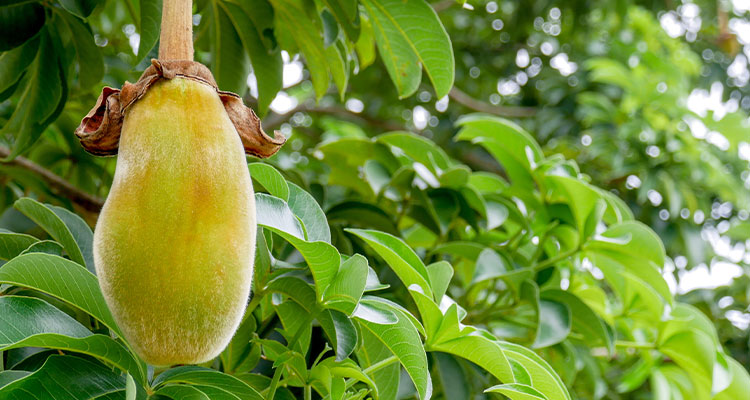The forgotten crops that could end micronutrient malnutrition
According to the United Nations Food and Agriculture Organization’s most recent State of Food Security and Nutrition in the World report, almost 30 percent of the global population experiences moderate or severe food insecurity. That’s approximately 2.4 billion people who struggle to access enough safe and nutritious food to live a healthy life. Clearly, something needs to change.
Progress has been made since the mid-20th century, with increased production of high-yield staple crops like wheat, rice, corn, and potatoes that have helped to reduce global hunger, contributing about 60 percent of calories consumed worldwide. However, one downside of overreliance on a relatively small number of crops is the lack of variety and the resultant rise of micronutrient malnutrition, commonly known as hidden hunger.
Hidden hunger occurs when individuals are deficient in important micronutrients like zinc, iron, and B12. While staple crops help feed our world, they don’t include all the necessary micronutrients required to support a healthy lifestyle.
A potential solution to the hidden hunger crisis? Underutilized and biofortified crops. Only 170 plants are currently cultivated on a commercial scale, yet there are

an estimated 30,000 edible plant species around the globe. That leaves tens of thousands of plants that have the potential to help feed the world but aren’t currently produced at scale. Underutilized crops are generally wild or semi-domesticated plants that are grown natively, but are often overlooked by researchers, food manufacturers, and policymakers.
Several types of crops are underutilized, including grains and pseudocereals, legumes/pulses, roots/tubers, fruits/vegetables, and nuts and seeds. While some underutilized crops, like flax and purple yams, have made their mainstream debut via food trends, regular consumption is typically only seen in traditional diets. Other underutilized crops such as roselle, baobab, and Bambara groundnut are completely unfamiliar to most populations.
Many underutilized crops are of high nutritional value, containing important micronutrients in addition to essential macronutrients like protein and fiber-rich carbohydrates. Since they are typically grown in regions with low rainfall, high temperatures, and less technical and economic resources, they are hardy plants that can thrive environmental and biotic stresses, a critical attribute. When other mainstream crops fail due to droughts, extreme heat, or pests, these crops are on the frontline of providing nutrition to local populations – sometimes becoming the only food source.
In addition to their nutritional value and hardiness, these crops often hold a cultural significance and culinary heritage in their communities. Women are often the experts on cultivating these crops and pass this knowledge across generations. To successfully utilize these crops, Indigenous community members and their expertise must be respected.
Another potential solution to the hidden hunger crisis is to bolster staple crops with key micronutrients, also known as biofortified crops. Examples include sweet potato fortified with vitamin A, beans with iron, and wheat with zinc. Many of these crops also exhibit agronomic benefits like yield advantage and increased resistance to stress.
Primarily developed as a nutrition intervention to elevate intake of critical micronutrients in targeted populations, adoption of these crops has resulted in many positive health benefits such as improved cognitive function and reduced child morbidity. Some of these crops can be used in existing value chains, making them more readily accepted by farmers and other stakeholders. Consumers often favor these crops over underutilized varieties because they better fit into their existing diets – though some underutilized crops, like millet, can also be biofortified.
Though both underutilized and biofortified crops have a myriad of benefits, there are several challenges in widening their adoption across the global supply chain. Underutilized crops are traditionally grown on a small scale, leading to insufficient knowledge of how to cultivate them on a larger scale. They often possess different colors, flavors, and textures than more widely consumed crops, potentially turning consumers off. Many of these crops also have a local stigma of being “foods of the poor,” creating challenges for broader consumption.
Biofortified crops face their own set of challenges. These are enhanced versions of crops that have increased nutrient content. Most often these are staple crops that already make up the majority of many diets. Some experts worry that increased production of staple biofortified crops might further push farmers to prioritize increased production over crop diversity and farming for their family’s needs. Similarly to underutilized crops, different colors, textures, and tastes may not be as acceptable to consumers as the traditional varieties.
Despite these challenges, food science and technology serve as a key tool that must be leaned upon to better take advantage of these important crops. Food science and technology present a variety of opportunities to champion these crops, including: improving nutritional value through processing, better understanding consumer needs and changing demographics, and expanding research on bioavailability, biomarkers, and health benefits.
Underutilized and biofortified crops present a unique opportunity to better feed our growing population, through elevating health and nutrition, economic prosperity, and environmental sustainability. Through food science and technology, we can fully reap the benefits of these unique crops and better feed our growing world.
For a list of the sources used in this article, please contact the editor.
By Anna Rosales
info.ift.org/underutilized-biofortified-crops
Anna Rosales, RD, is Senior Director, Government Affairs & Nutrition, Institute of Food Technologists. Since 1939, the Institute of Food Technologists (IFT) has been a forum for passionate food professionals and technologists to collaborate, learn, and contribute with the goal of inspiring and transforming collective scientific knowledge into innovative solutions for the benefit of all people around the world. As a scientific community grounded in purpose, IFT feeds the minds that feed the world.
